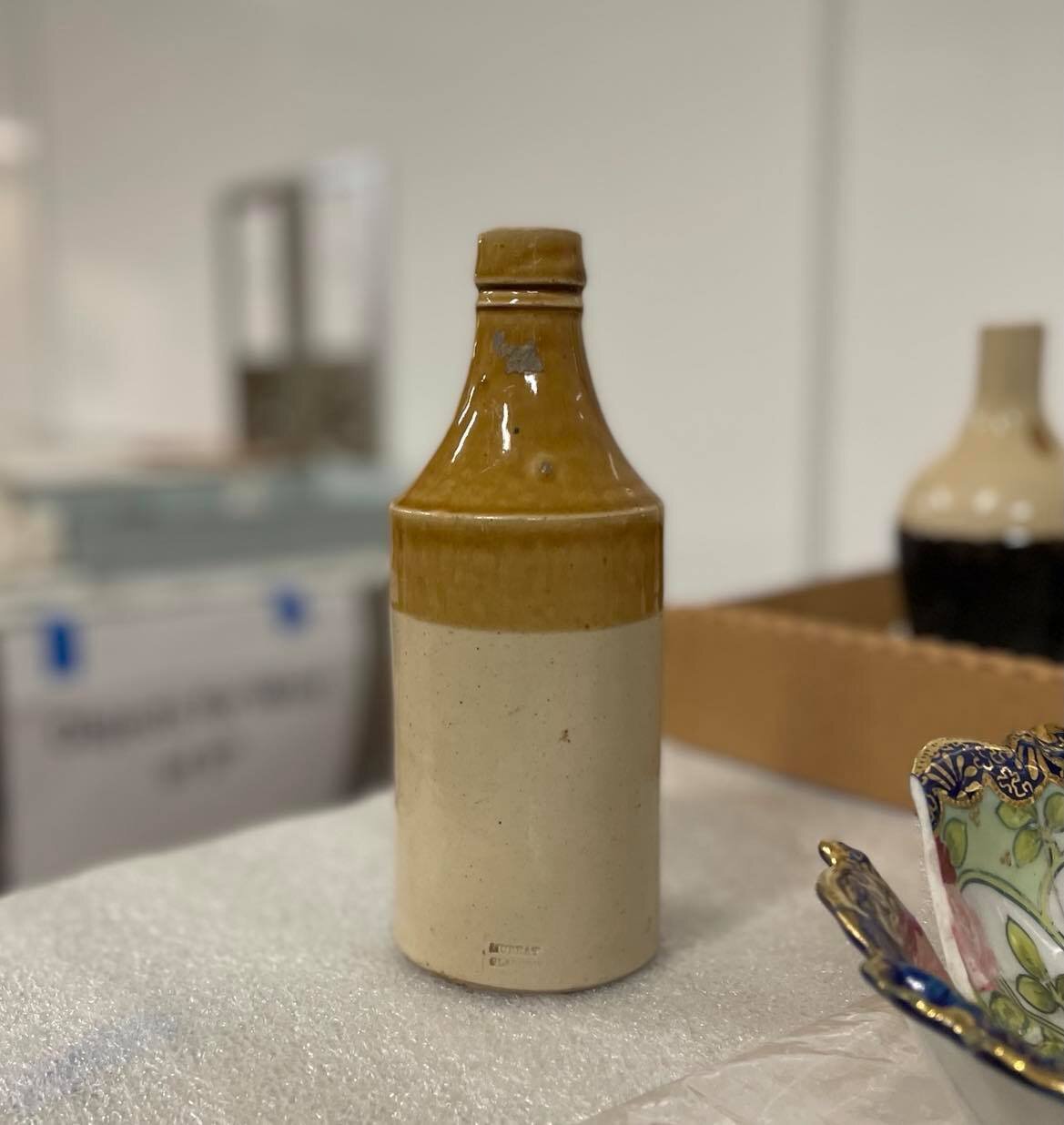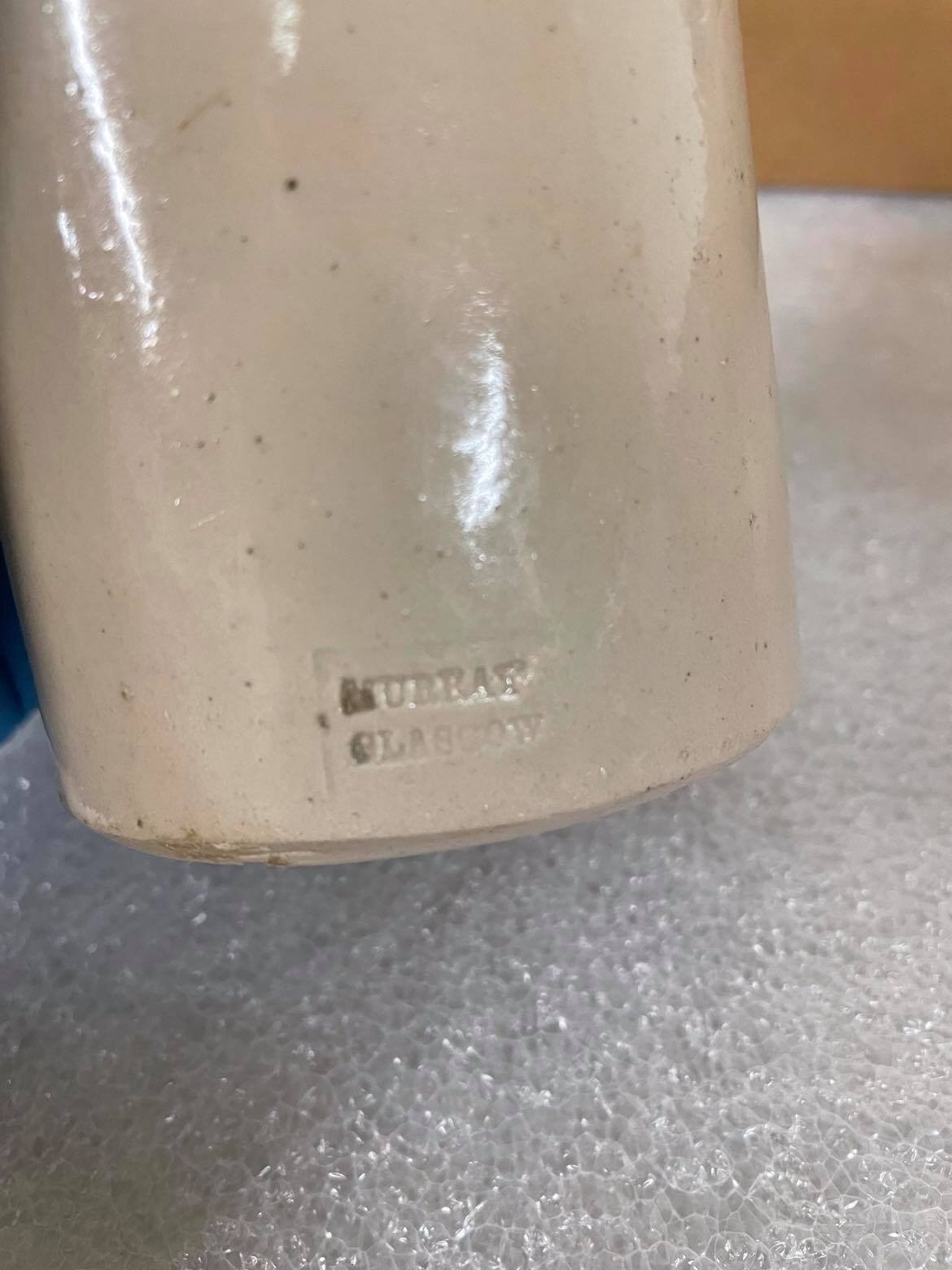Scottish stoneware: Connecting louisville to rutherglen
For the past two days I have been processing our incoming loan from Corn Island Archaeology, a local institution that kindly loaned us an abundance of objects from their excavation of the historic Beecher Terrace neighborhood. The archaeological dig led to discoveries about the life of the people and families who lived in the block between 9th St and 13th St from Jefferson St to Chestnut St throughout the 19th century. In order for our curator to select the objects for display, we sorted through bags upon bags of these everyday items that gave us a glimpse into West Louisville’s past. It was like finding perfume bottles imported from Europe or colorful playing marbles after going through your grandma’s attic, except everything belonged to people you don’t know. That’s the cool thing about objects – they can connect us through common activity where we otherwise would have no personal connection with the past.
As I carefully processed each object, one stoneware bottle, in particular, stood out to me because it was stamped with the words “Murray Glasgow.” At first I thought this might refer to a place in Kentucky, but I was curious to know whether it referred to the original Glasgow in Scotland, especially with Murray being a Scottish name too. Thanks to the Internet, I quickly discovered that a Murray & Co. pottery company did indeed exist in Glasgow, Scotland, and that it represented one of many names associated with pottery manufacturing in Glasgow throughout the 19th century. Like many manufacturing companies, pottery production in Glasgow changed hands and names several times from its establishment in 1800 until it closed in 1928. William Murray managed the company under W F Murray & Co. from 1868 to 1897, moving operations in 1872 to a new factory in Rutherglen. This fact sparked my curiosity even more than my initial discovery of the “Murray Glasgow” stamp, because I am married to a native Glaswegian who happens to be from the specific neighborhood of Rutherglen, a residential area located south-east of Glasgow’s city center. Had I unknowingly passed the present-day site of the historic pottery during my visits to this area? What exists there today? Before, this was a seemingly random ceramic bottle that belonged to a Beecher Terrance resident, perhaps to hold something like ginger beer, but now has become an object tied to a specific place in which I am personally interested.
The discovery of this stoneware bottle’s connection to Glasgow successfully sent me down a rabbit hole about the city’s height of industry at the turn of the century, the exportation of stoneware all the way to Louisville, and the 2007 excavation project that ultimately led to the unearthing of the former Caledonian Pottery site. What a whirlwind of interesting facts! When officials extended the M74 motorway in Rutherglen near Farmeloan Road, it instigated the need to find out the historical uses of the land before the motorway’s infrastructure potentially destroyed it forever. Archaeologists confirmed traces of the pottery, such as the bases of kilns and chimneys, which are all that remained after the building was torn down in 1930 to build Caledonian Steelworks. From my time spent in Glasgow, I was aware the city was a major hub of industry throughout the 19th century, arguably second only to London, but apparently, the Caledonian Pottery boasted the first continuous gas-fired kilns in the world! Scottish ingenuity continues to impress me. It’s no surprise either that the pottery grew large enough by the late 1800s to export to the United States, where upper-middle-class families like the historic residents of Beecher Terrace enjoyed its wares. When Murray & Co. operated the pottery, the company produced a variety of products like Rockingham teapots, inkwells, and acid jars, but transitioned solely to jam jars after WP Hartley took ownership.
The pottery dissolved for good in 1928 when glass jars outperformed stone jam jars, but people in Glasgow today still remember the historic pottery through groups like the Scottish Pottery Society and Rutherglen Heritage Society. And when I am next able to travel back to Rutherglen, contacting the South Lanarkshire Museum Service (who now house the findings from the M74 excavation) will be first on my list of things to do. Perhaps I’ll also have a chance to visit a few local pottery stores and carry on the tradition of Louisvillians with Glaswegian stoneware in their homes.
You can see this stoneware bottle on display in our exhibit, West of Ninth: Race, Reckoning, & Reconciliation, on view through Fall 2022.
-Hayley Rankin, Manager of Collection Impact


